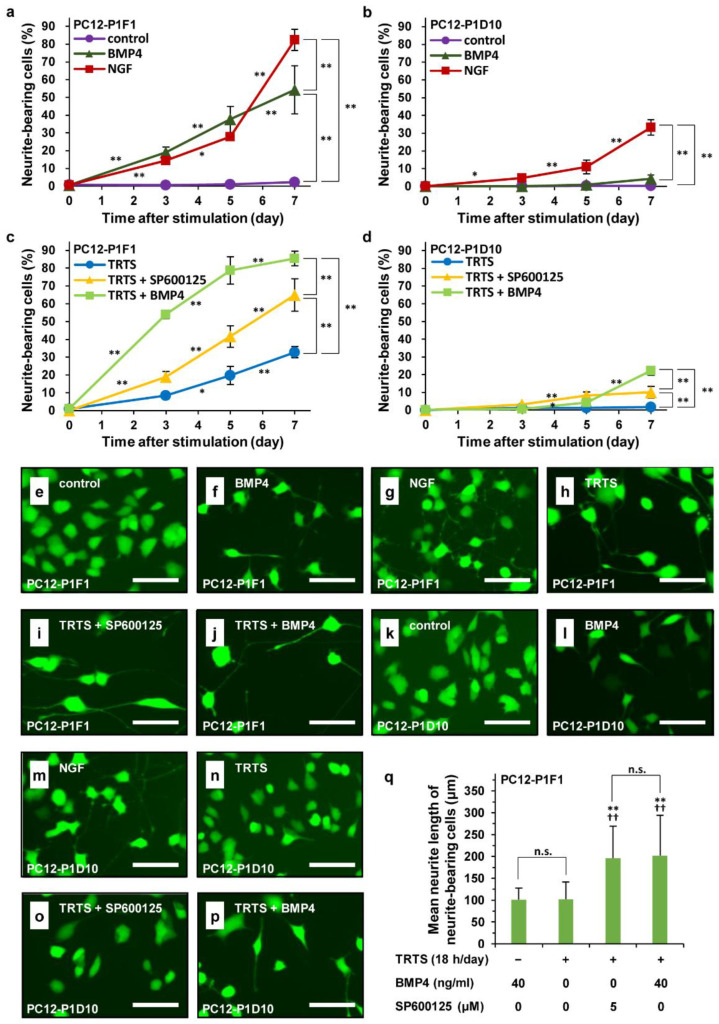Figure 3.
Time course and live imaging of SP600125-mediated enhancement of TRTS-induced neuritogenesis in PC12-P1F1 cells. PC12-P1F1 or PC12-P1D10 cells were incubated with BMP4 (40 ng/mL) or NGF (50 ng/mL) for 7 days. Furthermore, PC12-P1F1 or PC12-P1D10 cells were also pretreated with SP600125 (5.0 μM) or BMP4 (40 ng/mL) with TRTS 18 h/day for 7 days. PC12-P1F1 (a,c) and PC12-P1D10 cells (b,d) were scored for neurite outgrowth after 0–7 days of incubation with the indicated conditions. (a–d) The data represent the means ± standard deviation of four replicates. * p < 0.05; ** p < 0.01. (e–j) Representative live images of PC12-P1F1 cells treated without stimuli (a control) (e), BMP4 alone, (f), NGF alone (g), TRTS alone (h), TRTS plus SP600125 (i), and TRTS plus BMP4 (j). (k–p) Representative live cell images of PC12-P1D10 cells treated without stimuli (a control) (k), BMP4 alone, (l), NGF alone (m), TRTS alone (n), TRTS plus SP600125 (o), and TRTS plus BMP4 (p). (e–p) Scar bars: 100 μm. (q) The averaged neurite length of neurite-bearing PC12-P1F1 cells 7 days after the indicated stimulations. The data represent the means ± standard deviation of ten replicates. †† p < 0.01 vs. BMP alone; ** p < 0.01 vs. TRTS alone; n.s., not significant.

